Anna Ryon is an attorney from Iowa who currently lives in Washington, D.C.
I live in Washington, D.C., and I don’t feel safe. Every time I leave home, I wonder if I’ll make it back. Before leaving, I turn off Face ID on my phone so no one can open it if they take it from me, write phone numbers in ink somewhere on my body, and make sure to turn on live location tracking so someone knows where I am at all times. Saturday afternoon before my husband and I went out, he texted his parents to tell them where we were going in case anything happened.
I got my first job in D.C. in 2007 and have lived and worked in D.C. on and off since then, so I feel pretty familiar with life in D.C. This level of fear is new. For most of my time in D.C., my safety concerns were the same basic safety concerns I’d have in any city, including Des Moines. I felt comfortable wearing earbuds while walking alone and openly carrying my iPhone. The extra fear I now feel for my safety has a specific starting date: Monday, August 11, 2025.
What makes me feel unsafe is the presence of armed federal agents who are not trained in community policing. Every city has typical city issues. And while they may be annoying at times, they rarely turn violent, in large part because local police are trained in how to respond and deescalate.
When I see federal agents with guns, I’m more afraid that normal city stuff will escalate to violence and endanger not only those involved, but others in the vicinity because federal agents are not trained in community policing and have different policies for use of force.
Additionally, the more time federal agents spend on the streets of D.C., the less time they spend doing what they are trained to do to. Sources told CNN that this leaves the country more vulnerable to terrorism, foreign counter-espionage threats, and cyber-incursions, as well as weakening our response to the fentanyl epidemic.
What makes me feel even more unsafe in D.C. is the arrival of more than 1,000 National Guard troops sent by Republican governors from Louisiana, Mississippi, Ohio, South Carolina, Tennessee, and West Virginia. At least initially, the National Guard members in D.C. were D.C. residents who understand the city. Also initially, National Guard members in D.C. were not carrying firearms, but the Trump administration has indicated that this will soon change.
Sending armed out-of-state troops who are neither trained in local policing nor familiar with the city does not increase public safety. Rather, to D.C. residents, it feels like a military occupation by foreign forces.
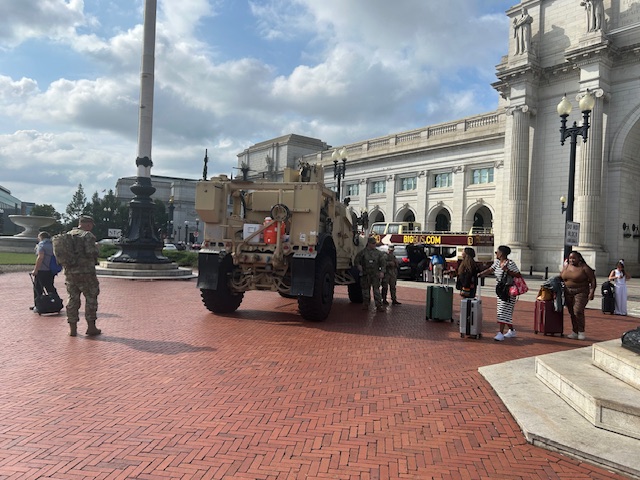
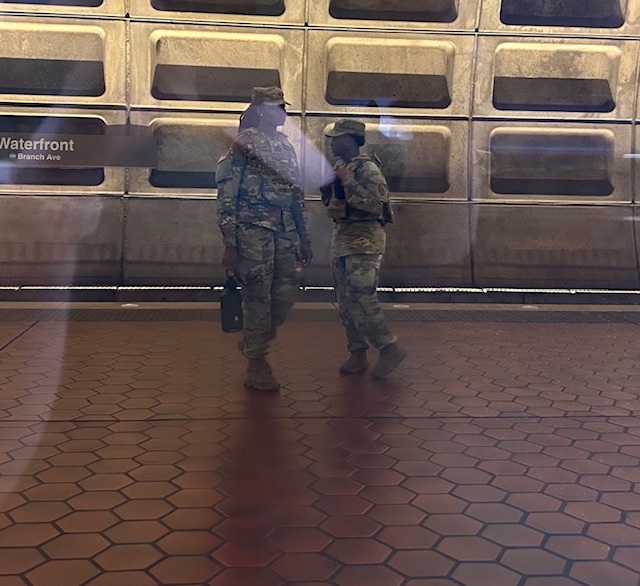
Since August 11, 2025, the presence of federal agents from a variety of agencies is ubiquitous in D.C. They’ve made regular appearances in the the neighborhoods I frequent most: the Wharf and Navy Yard. They’ve been in the U Street corridor where I shop, and in DuPont Circle where my favorite pizza place is located. They’ve even been spotted in wealthy Georgetown. Last Friday, there was a traffic checkpoint three blocks from my home. A line of unmarked black SUVs extended a block, surrounded by people in camouflage, a number of whom wore masks.
It appears that I’m not alone in feeling less safe now. During the first week of Trump’s takeover, restaurant reservations dropped by more than 25 percent. Anecdotally, bar and club owners have reported smaller-than-usual crowds. Teens describe feeling less safe with federal agents around. In local social networks, people of color report feeling particularly frightened and describe extra steps to ensure their safety, including memorizing attorney phone numbers and affixing air tags to their underwear so they can be tracked.
Trump’s takeover is so unpopular that when asked an open-ended question about the largest problem facing the city, more Washingtonians named Trump’s takeover (24 percent) than crime (22 percent). (8) That same Washington Post poll of D.C. residents found a full 79 percent oppose the takeover. That aligns with the 78 percent of Washingtonians who feel “safe” or “very safe” in their neighborhoods. Simultaneously, support for D.C. statehood has skyrocketed, reaching 73 percent—the highest rate of support since 1993.

The numbers support my impression that before August 11, Washington, D.C. was a safe place to live. Like much of the U.S., the nation’s capital experienced a post-pandemic spike in crime in 2023. But since then, violent crime has been steadily decreasing. Newsweek recently published a story on the 30 U.S. cities with the highest rates of crime against people as reported to the FBI. Washington, D.C. is not on the list. There are, however, four cities in Ohio, two in Tennessee, one in Louisiana, and one in South Carolina.
Why, then, would Trump want to take over D.C.? And why would governors from Louisiana, Ohio, South Carolina, and Tennessee send their National Guard troops to D.C. when they have more violent cities at home? Could it be because more than 90 percent of D.C. residents voted for Kamala Harris? Or because D.C.’s mayor is a Black woman?
It’s striking that Black women are mayors of the only two cities where Trump has so far deployed federal troops: Los Angeles and D.C. Other cities that Trump has targeted, including Baltimore, Chicago, New York, and Oakland, also have Black mayors.
Historically speaking, D.C. is a Black city. From the 1950s through 2011 (i.e., most of Trump’s life), D.C. was a majority-Black city. Washington, D.C. is still a plurality-Black city with Black residents comprising 41 percent of the population, while White residents are 38 percent. If D.C. were to become a state, it would be the only plurality-Black state in the country.
Although Trump has not specifically mentioned race in his condemnation of cities, the overarching tone of his rhetoric and choice of cities to attack makes it hard to view Trump’s targeting of these cities as anything other than racist. Marc Morial, president of the National Urban League, and George Lambert, president of the Greater Washington Urban League, said in a statement, “Painting a false picture of the city’s largest Black-majority cities, led by Black mayors, is part of the Trump administration’s ongoing strategy to exploit racial distrust for political gain.’’
It’s also easy for Trump to take over D.C. because D.C. lacks statehood and is still largely controlled by Congress. D.C. has limited home rule under the Home Rule Act of 1973. That act allowed D.C. for the first time to elect its own mayor and city council members. Congress, a body in which D.C. residents have no representation, maintains control over D.C.’s laws and its budget.
Most relevant to the current situation, the president has limited authority to temporarily take control of the D.C. police department for “federal purposes” when there are “special conditions of an emergency.” That authority only lasts 30 days unless extended by Congress.
Trump has claimed that out-of-control crime in D.C. constitutes special conditions of an emergency that warrant federal takeover of the D.C. police. Unlike every other state and territory, the D.C. National Guard is always under the president’s control. A leaked memo suggests that Trump plans to extend the D.C. National Guard deployment until September 25.
The legal underpinning for bringing in out-of-state National Guard troops is less certain than deploying the D.C. National Guard. The most plausible legal argument is that troops are being brought in to protect federal assets. But even if National Guard troops are only stationed on federal land, they have access to nearly all of D.C. The federal government owns nearly 25 percent of all land in D.C. Federal lands in the capital are spread throughout the city and include many small, unexpected locations, such as traffic circles. Because of the omnipresence of federal lands, the National Guard can occupy D.C. in a way that it cannot do in any other city.
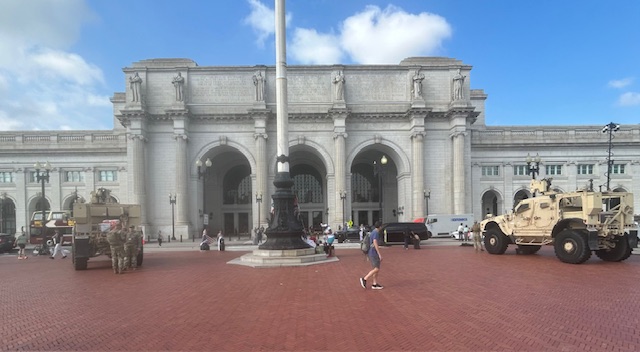
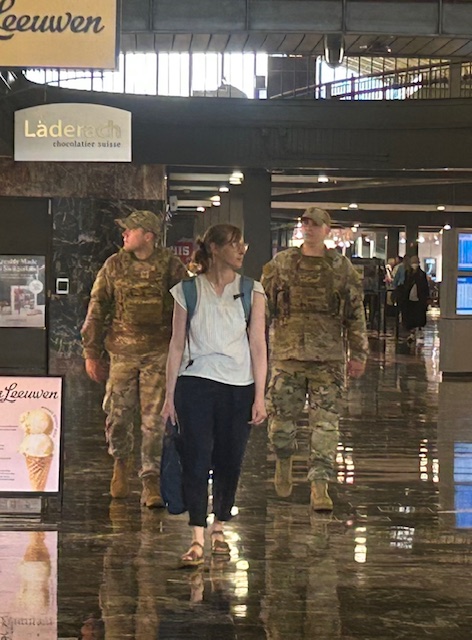
The fact that it is so easy for Trump to occupy D.C. is a reminder of why D.C. deserves to become the 51st state—a popular idea among Democrats, but not Republicans. Statehood for D.C. would almost certainly add two Democratic senators, giving the party a better chance to control the Senate. (Republicans currently have a structural advantage in the chamber.) While D.C. would only get one member of the House of Representatives, another state would lose one.
It’s worth noting that with an estimated 702,250 residents, D.C. has a greater population than Wyoming (587,618) and Vermont (648,493), and D.C.’s population is close to that of Alaska (740,133). In 2024, D.C. paid more federal taxes than 26 states, including Iowa, Nebraska, North Dakota, and South Dakota. Washington, D.C. residents pay a higher per capita federal income tax than any state in the union. Thus the motto on D.C. license plates: “End Taxation Without Representation.”
That over 700,000 Americans live under the authority of a legislature in which they have no representation is fundamentally un-American. This makes it easy for partisan members of Congress or presidents to abuse federal authority over Washington D.C. The current federal takeover of D.C. is an example of this. As Mayor Muriel Bowser stated in a post on X, “American soldiers and airmen policing American citizens on American soil is #UnAmerican.” And this kind of military occupation may be coming soon to a city near you. During the August 11 announcement of his federal takeover, Trump said, ”We’re going to take back our capital. . . And then we’ll look at other cities also.”
One final note about Trump’s takeover of D.C.—he still hasn’t released the Epstein files.
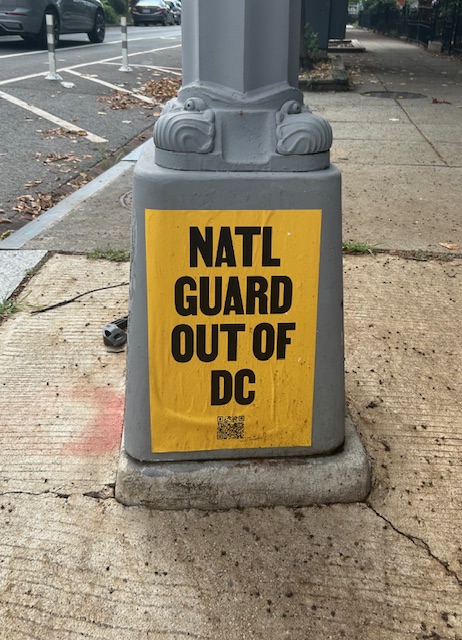
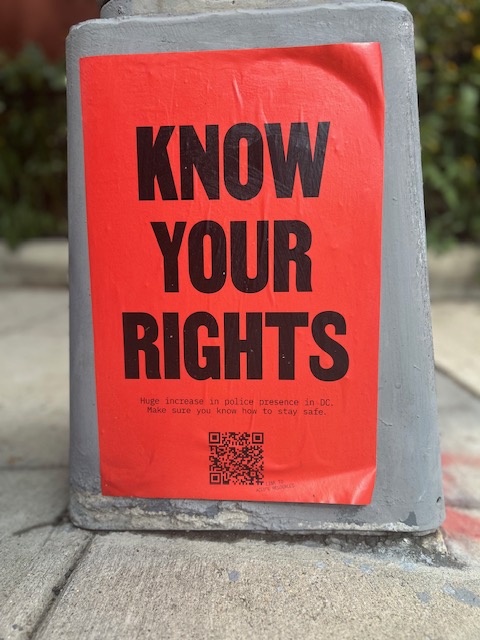

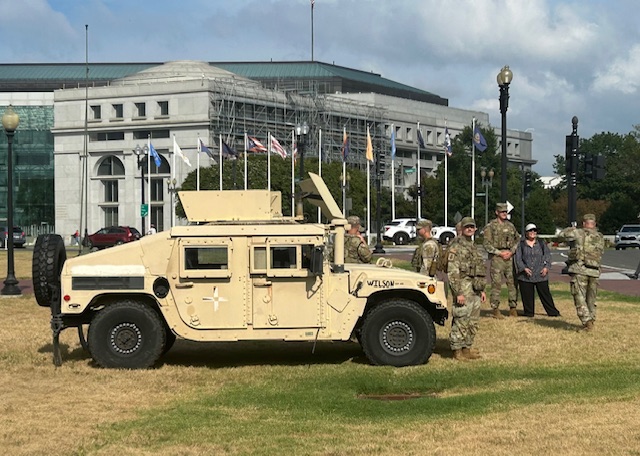
1 Comment
thanks for the first hand account
hoping non-MAGA elected officials will now stop demonizing cities and valorizing rural areas as somehow being the homeland of Real Americans.
Took me a minute to grasp what Iowans meant when they said “people from Chicago” but there is a version of this bigotry everywhere and it ruins lives, even ends some.
https://prospect.org/politics/2025-08-22-how-moderate-senate-democrats-enabled-trumps-dc-takeover/
dirkiniowacity Sat 23 Aug 10:49 AM